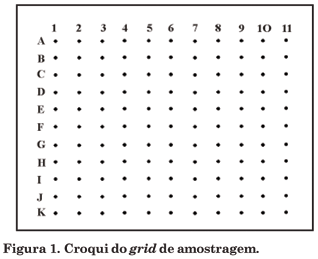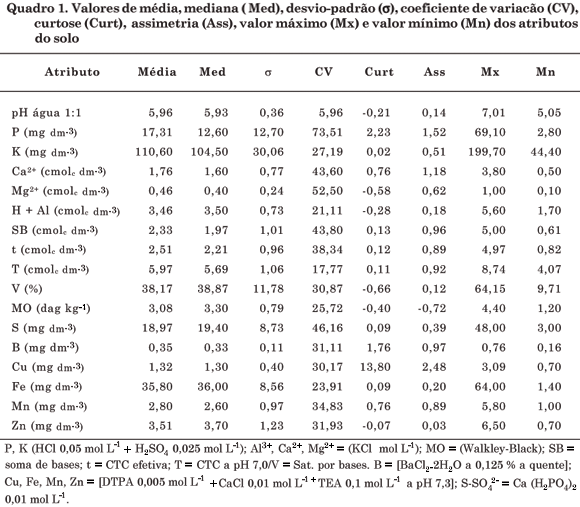The spatial variability of soil chemical attributes was evaluated in a commercial plantation under conventional soil tillage in Uberlândia, state of Minas Gerais, Brazil, in 2004. The sampling grid was the Santa Rosa Farm, where the soil is classified as very clayey Red Latosol (680 g kg-1 clay). The objective was to evaluate the spatial distribution and dependence of the soil chemical attributes in a plantation under conventional soil tillage. For this purpose, soil data were collected from a grid of 121 sampling points in the 0-0.2 m layer, spaced 50 m apart, and analyzed by means of geostatistics. The following soil attributes were assessed: soil pHwater; phosphorus and available potassium; calcium, magnesium and exchangeable aluminum; H + Al; boron; copper; iron, manganese; zinc; sulphur and organic matter. The values of base saturation (V %), total CEC (T) and sum of bases (SB) were also computed. The data were evaluated by descriptive statistics and spatial dependence analysis, through the adjustment of semivariograms. The variation coefficient (CV) of most attributes was high; the highest one was found for phosphorus (73.51 %) and the lowest for soil pHwater (5.96 %). The majority of the evaluated attributes presented moderate and strong spatial dependence. Additionaly, most of the data adjusted to the Gaussian semivariogram model.
spatial dependence; models of semivariograms; techniques for soil sampling; precision agriculture

 Spatial variability of soil chemical attributes in areas managed under conventional tillage
Spatial variability of soil chemical attributes in areas managed under conventional tillage




